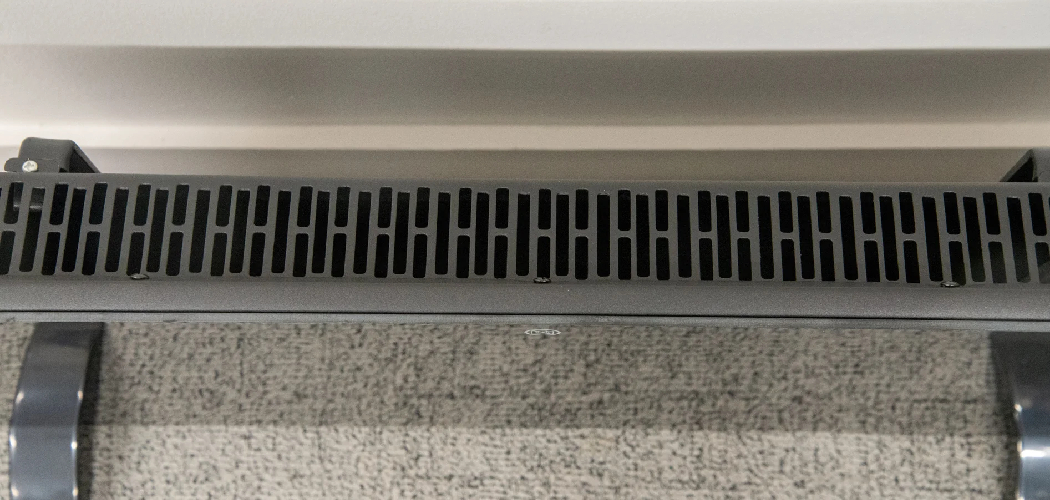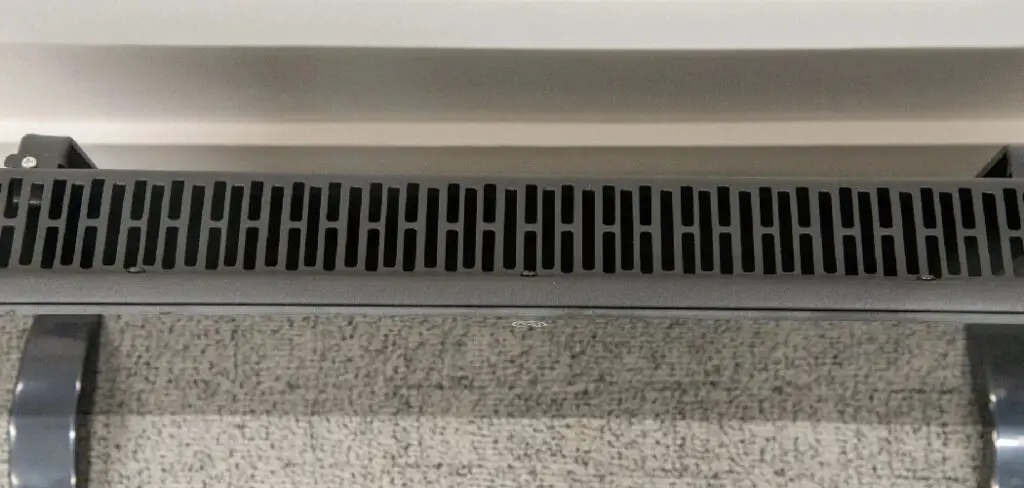
Are you looking for the best way to keep your patio heater from tipping over? You’ll be glad to know that several easy and effective strategies are available.
Patio heaters are becoming popular to take advantage of the long summer evenings and chillier winter days. Not only do these outdoor appliances provide warmth, but they can also be used as decorative pieces on your patio.
However, if you’re adding one of these devices to an outside space in your home, keeping safety front-of-mind and ensuring that your heater won’t topple over during colder weather or windy conditions.
In this blog post, we’ll discuss how to keep patio heater from tipping over for optimal protection against tipping accidents and potential damage to other property. Keep reading to learn more!
What Will You Need?
To effectively protect your patio heater from tipping over, you’ll need the following supplies:
- Patio base (preferably a heavy base like concrete or sand)
- Stakes or anchors to secure the base and heater to the ground
- Leveling shims
Once you have these items on hand, you’ll be ready to get started.
10 Easy Steps on How to Keep Patio Heater From Tipping Over
Step 1. Choose a Suitable Location:
Select a flat and level spot on your patio to set up the heater. Ensure it is away from furniture, plants, or other items easily knocked into it. Because patio heaters get hot, you’ll also want to be sure that it’s not positioned in a place where people will regularly walk and risk getting burned.
Step 2. Secure the Base:
Place the base at the selected spot and secure it with stakes or anchors to prevent the patio heater from moving during windy conditions. Don’t forget to check that the base is level using a carpenter’s level. It will help stabilize the heater and ensure it doesn’t tip over.
Step 3. Level The Heater:
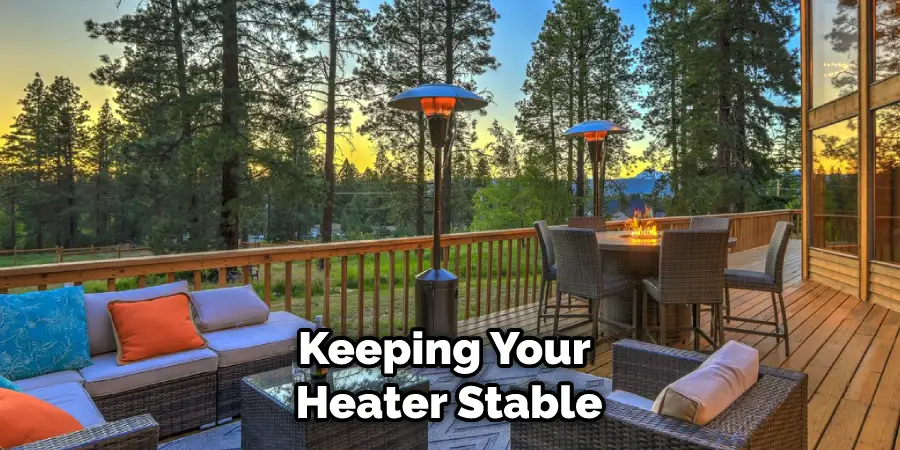
Place leveling shims between the base and heater to ensure that they are properly balanced and level. This will help to minimize tipping risk by keeping your heater stable even in rough conditions. Moreover, you can also consider using a weighted base for additional stability.
Step 4. Check For Stability:
Once you have secured the base and leveled your patio heater, stand back and check for stability. If you detect any instability, add additional shims as needed until all parts are completely level and properly secured to one another. Be careful not to overtighten, as this can cause the heater to tilt.
Step 5. Secure The Heater:
Once the heater is secured to the base and leveled, it’s time to secure it even further with stakes or anchors. This will help keep your patio heater in place even during windy conditions. Ensure all connections are snug and secure.
Step 6. Monitor The Heater:
Even after securing your patio heater with stakes or anchors, you should still monitor it regularly for any signs of instability or tipping risk. If you detect any issues, adjust the shims as needed until everything is stable and level again. Remember to periodically check your stakes and anchors for any signs of wear or damage.
Step 7. Clean Up Debris:
Make sure that all debris from the installation process is cleaned up around the patio heater so that nothing can get caught underneath and cause the heater to tip over. It will also make the area look neat and tidy. And it’s always a good idea to check the area around your heater before and after use for any items that could be hazardous.
Step 8. Check For Damage Regularly:
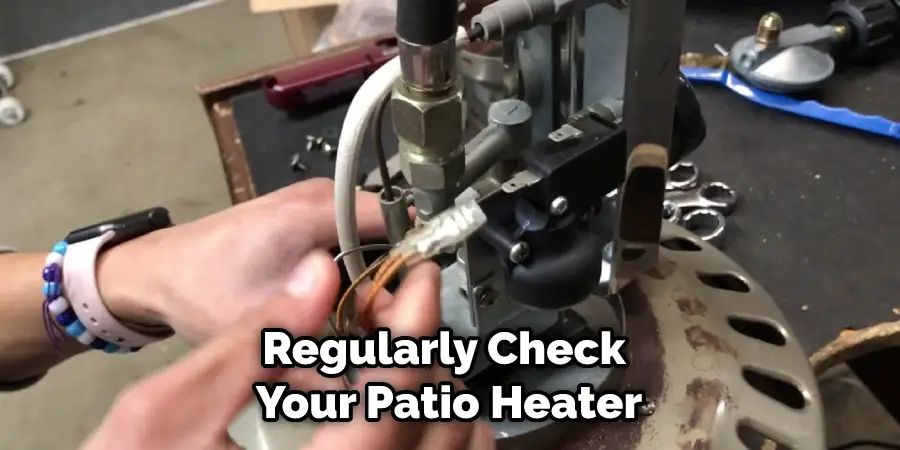
Make sure that you regularly check your patio heater for any signs of wear and tear or damage. This will help ensure that it is always in top condition and won’t pose a tipping risk. Otherwise, you should replace it right away.
Step 9. Place Furniture And Other Items At A Distance:
You should also avoid placing furniture, plants, or other items too close to the patio heater, as this could make it more prone to tipping over during windy conditions. Don’t forget to leave enough space between the heater and other items so that you can inspect it regularly for any signs of damage or instability. If needed, place a barrier or fence around the heater to keep people and animals away.
Step 10. Choose The Right Fuel Type:
It is important to select the right fuel type for your patio heater. Make sure you use the recommended fuel type and never use flammable liquids, as this could increase the risk of tipping over. If you’re using a propane tank, ensure it is stored upright with proper ventilation to avoid any potential hazards.
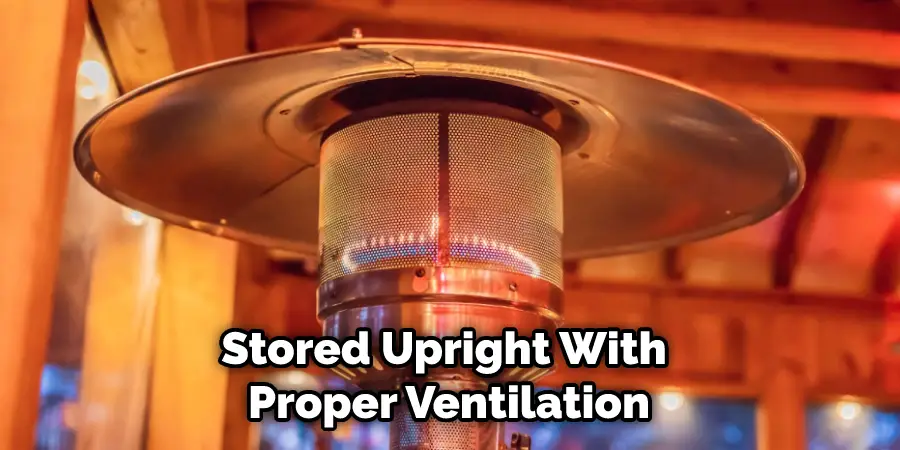
By following these steps, you can rest assured that your patio heater will be secured and stable enough to withstand windy conditions without tipping over. Remember to inspect your patio heater regularly for any signs of damage or wear and tear so that you can enjoy safe and comfortable outdoor gatherings all year round!
5 Additional Tips and Tricks
- Secure the Patio Heater to the Ground: To ensure your patio heater won’t move, you can secure it to the ground using bolts and stakes. This is especially important in windy areas, as strong gusts can easily cause your patio heater to move and tip over.
- Place the Patio Heater on a Flat Surface: Make sure you place it on a flat, stable surface like concrete or bricks so that it won’t tilt or move when people walk by or bump into it.
- Use Heavy Bricks or Stones to Counterbalance Weight: You can also use heavy bricks or stones to counterbalance the weight of the patio heater and help keep it in place. Place these around the base of the heater for extra stability.
- Anchor with Chain and Ground Screw: An additional option is to anchor your patio heater to the ground with a chain and ground screw. This will provide extra security against tipping and movement.
- Place the Patio Heater in an Enclosed Area: Finally, if possible, place your patio heater in an enclosed area like a gazebo or screened-in porch for additional protection against wind gusts and other external elements that may cause it to move and potentially tip over.
By following these tips, you can keep your patio heater safe and secure all season long!
5 Things You Should Avoid
- Don’t put the patio heater on an uneven or unstable surface. Make sure you place it on level ground and secure it with weights or anchors if necessary.
- Don’t pile heavy items near the heater, as this could cause it to tip over.
- Avoid hanging anything from the heater, including plants, wind chimes, strings of lights, etc., that could add extra weight and cause it to topple over.
- Don’t leave children or pets unattended around the patio heater as they can easily knock it over by accident.
- Even if your heater is mounted correctly, don’t use excessive force when operating it—this could also lead to tipping over.
Following these simple precautions can help ensure your patio heater is secure and safe to use. If you’re ever in doubt, it’s best to contact a professional for assistance on how to keep your patio heater from tipping over.
Can You Leave Patio Heater Outside in the Rain?
No, leaving your patio heater outside is not recommended in the rain. Most patio heaters are designed to be used outdoors but should not be exposed to the elements. Rain can cause corrosion and damage to the electronic components of your heater, which could potentially lead to safety hazards.
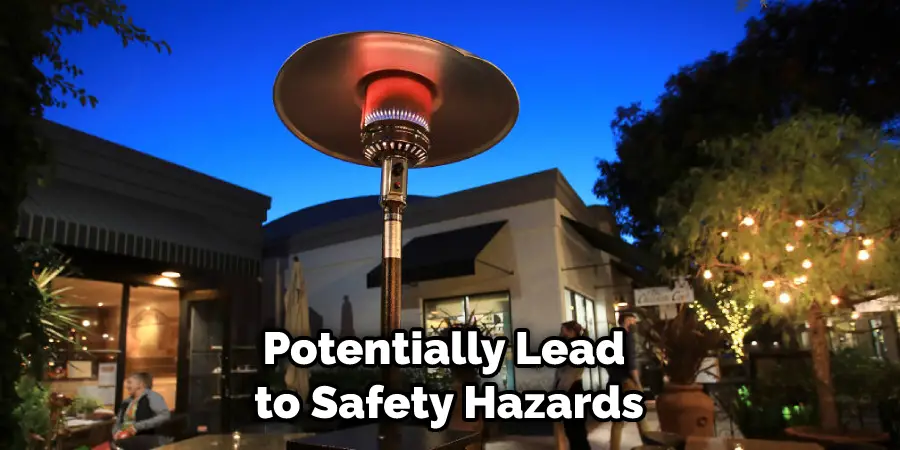
It’s best to store your heater indoors (in a dry and sheltered area) when it’s not in use or cover it with a waterproof tarp if you plan on leaving it outside for an extended period.
Additionally, ensure you inspect and clean your patio heater regularly for any signs of wear and tear so that you can ensure its safe operation all year round!
Conclusion
Keeping your patio heater from tipping over is essential for enjoying a safe and comfortable outdoor gathering. By following the tips above and avoiding the common pitfalls, you can rest assured that your patio heater will be secure and stable enough to withstand windy conditions without tipping over.
Remember to inspect your patio heater regularly for any signs of damage or wear and tear to ensure it operates safely and efficiently all season long.
In the end, knowing how to keep patio heater from tipping over can be essential knowledge, especially if you plan on having guests in your backyard during the cold evenings.
Investing in base/stands for your heater is a great way to ensure its stability and should be considered when purchasing your patio heater.
Additionally, make sure you are aware of local fire codes before using patio heaters—they can be dangerous and must be used with caution. With a few simple steps, you can easily enjoy the warmth of your patio heater without worry!
You Can Check It Out to Stop Patio Going Green

